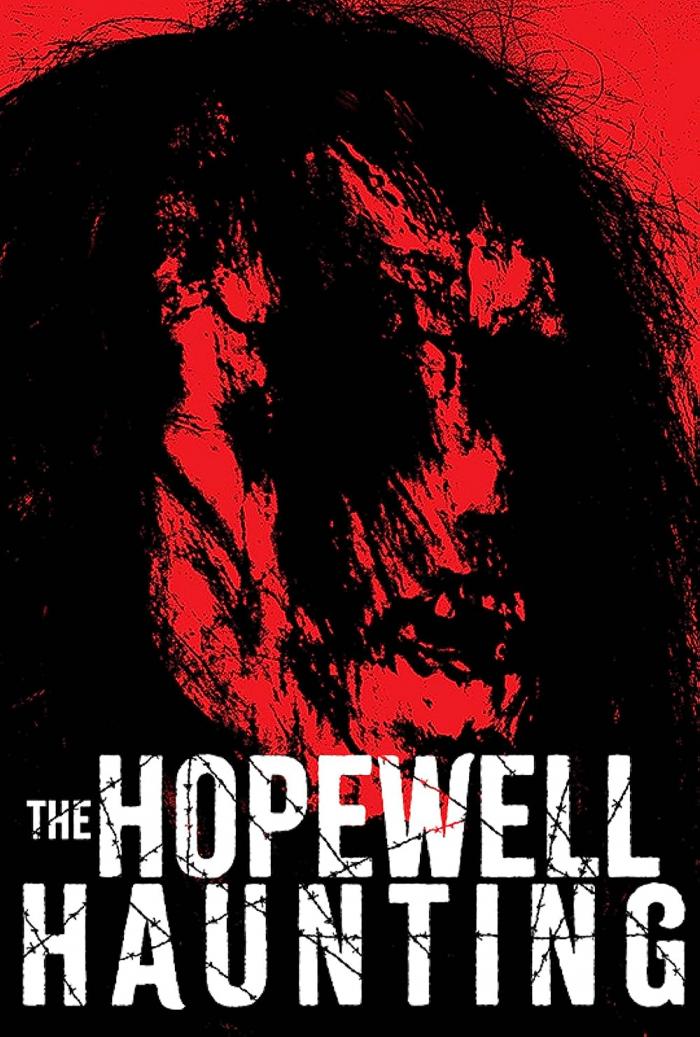You are here
Home › Movies › A Dark House Harbors Dark Secrets In Quick Hill Films Productions' 'The Hopewell Haunting' ›A Dark House Harbors Dark Secrets In Quick Hill Films Productions' 'The Hopewell Haunting'
FTC Statement: Reviewers are frequently provided by the publisher/production company with a copy of the material being reviewed.The opinions published are solely those of the respective reviewers and may not reflect the opinions of CriticalBlast.com or its management.
As an Amazon Associate, we earn from qualifying purchases. (This is a legal requirement, as apparently some sites advertise for Amazon for free. Yes, that's sarcasm.)

Tales of earthbound sprites have haunted the shadowy corners of cultures worldwide since time immemorial. The ancients wrote of them often: Odysseus encountering the apparition of his dead mother; the Witch of Endor invoking the wraith of Samuel; a visitation by a deceased husband in Virgil’s Aeneid; the disciples’ strident fear that Jesus was a ghost. Even one of the earliest known samples of written language—a Mesopotamian cuneiform tablet dating to 1500 B.C.—is itself an instruction manual for the exorcism of restless spirits.
Is it any wonder that in our modern era such stories still touch some resonant chord deep within the collective reptilian brain? Despite the near-miraculous scientific developments of the last two centuries, the mystery of what lies beyond death remains, perhaps fittingly, the one unsolvable riddle of human existence. It’s an intriguing situation: we’ve traded supernatural superstition for technological innovation, yet as Sigmund Freud once noted, ‘We do not feel quite sure of our new beliefs, and the old ones still exist within us ready to seize upon any confirmation.’
Hollywood, for one, has capitalized on the disquieting notion of the returned dead from its very inception. Movies like 1943’s The Univited foreshadowed future thrills-n-chills classics such as The Haunting (1963), The Legend of Hell House (1973), The Shining (1980), The Sixth Sense (1999), and The Conjuring (2013), and that spooky celluloid lineage continues with Quick Hill Films Productions’ latest feature, The Hopewell Haunting, an eerie slab of Southern Gothic sure to send a shiver down any viewer’s spine.
There’s surprisingly little meat to the premise: set in 1934 in the isolated Kentucky barren of Hopewell, Brother James (Ted Ferguson), the aloof pastor of the rural community’s dilapidated church, is approached by a frightened young couple, Newt Fryman (Timothy Morton), and his mute, mentally challenged wife, Ollie (Audra Todd), who confide in the holy man that their new house is plagued by ‘haints’. After a begrudging agreement to bless the rambling, overgrown brick abode, James flees during his initial encounter with the house’s otherworldly entity before he is forced to confront both the unsettled spirit and his own bitterness over a decades-past failed romance.
With such a pared-down plot, minimal dialogue, an unhurried pace and sparse soundtrack, one could understandably expect The Hopewell Haunting to be a pretentious art-house bore at best or an inane twice-removed Conjuring clone at worst, but writer-director Dane Sears exhibits exquisite showmanship in keeping an audience intrigued throughout the eighty minute running time. Unlike many mega-buck studio misfires (1999’s The Haunting remake, anyone?) that rely on a bombastic sensory blitzkrieg to batter the masses into submission, Sears instead takes a wisely underhanded attitude, revealing his narrative hand with slow, deliberate skill. Dispensing with jarring jump cuts, the camera slowly advances in leisurely unbroken takes through dismal, dark corridors while the bloodcurdling screams of a long-buried murder echo throughout the house. It’s that same use of sound that’s the movie’s strongest asset; we see less than we hear, and in that way The Hopewell Haunting evokes the stripped-to-the-bone celluloid specter of The Blair Witch Project, with its hidden, implied terrors that nonetheless inspire more genuine fear than an army of CGI phantoms.
Aiding and abetting that directorial deftness is a superbly talented cast of actors, each of whom bring a sense of realism and grace to their roles. Ferguson’s portrayal of the embittered, solitary Brother James—a man prone to ill-tempered bouts of despair that would, in a lesser thespian’s hands, merely make for a dour, boorish bully—instead blossoms into a sympathetic depiction of lost love and grief. Similarly, the flawless period details and beautifully crisp backwoods cinematography elevate the proceedings to a level far above the film’s crowdfunded roots.
If there is weakness in Sears’s formula, it lies in the film’s tidy, straight-forward resolution. While satisfying in the sense that most threads are neatly tied, some core questions raised throughout are left unanswered: who, precisely, was haunting the Fryman house to begin with, and what were the details surrounding their horrific demise? In spite of this omission, however, The Hopewell Haunting offers solid entertainment, filled with unnerving atmosphere and authentic chills, and it’s for this reason that I give it a well-earned 4 (out of 5) on my Fang Scale.


